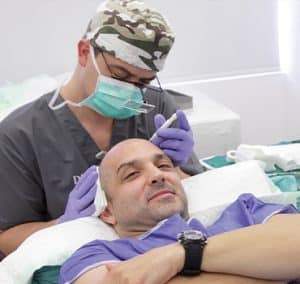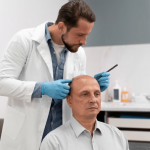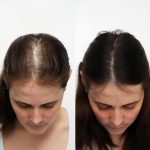Effective Hair Transplant for Hormonal Baldness: A Comprehensive Guide
Hormonal hair loss, also known as androgenetic alopecia, is one of the most common types of hair loss affecting both men and women. It is primarily caused by the influence of androgens (male hormones like testosterone) on the hair follicles, leading to thinning and eventual hair loss. While various treatments exist, hair transplants have become famous for those seeking long-term results. This article will explore the role of hair transplants in addressing hormonal hair loss, detailing the procedure, effectiveness, risks, and considerations.
-
Understanding Hormonal Hair Loss
Hormonal hair loss is often a genetic condition where the hair follicles shrink due to the influence of dihydrotestosterone (DHT), a byproduct of testosterone. Over time, the affected hair follicles produce thinner, shorter, and less pigmented hair, eventually leading to baldness in certain areas. In men, this condition typically results in a receding hairline and bald spots on the crown, known as male pattern baldness. Women may experience general hair thinning, especially around the part line, known as female pattern hair loss.
Several factors can influence hormonal hair loss, including:
- Genetics: Family history significantly determines whether an individual will experience hormonal hair loss.
- Hormonal Changes: Pregnancy, menopause, thyroid imbalances, and conditions like polycystic ovary syndrome (PCOS) can trigger or exacerbate hair loss.
- Age: As individuals age, the likelihood of experiencing hormonal hair loss increases.
While treatments such as topical minoxidil or oral medications like finasteride are available, these are typically used to slow hair loss rather than restore hair that has already been lost.
-
What is a Hair Transplant?
A hair transplant is a surgical procedure that involves moving hair follicles from one part of the body (typically the back or sides of the scalp, which are less affected by hormonal changes) to areas where hair has thinned or is balding. The primary goal is to restore a natural-looking hairline and improve hair density in balding regions.
There are three techniques for hair transplantation:
- Direct Hair Implantation (DHITM): This method of hair transplantation is non-invasive and involves extracting hair follicles from a donor area and implanting them directly into the recipient area without creating incisions or channels beforehand. The process is performed using a specialized tool called a DHI Implanter, which allows precise control over each implanted follicle’s angle, direction, and depth, giving lifetime visible results.
- Follicular Unit Transplantation (FUT): The “strip method” involves removing a strip of skin from the donor area, from which individual hair follicles are extracted and transplanted into the balding areas.
- Follicular Unit Extraction (FUE): This method involves individually extracting hair follicles from the donor area with an extractor, collecting all the grafts in a tray, and then creating slits with the help of a sharp blade into the recipient area and then transplanting them via inserting grafts with forceps to the recipient site.

-
The Procedure
The following steps are usually involved in the hair transplant procedure:
- Consultation: Before the surgery, patients meet with a specialist to discuss their hair loss pattern, expectations, and the feasibility of the transplant. The doctor assesses the donor area and determines how many grafts will be needed to achieve the desired results.
- Preparation: On the day of the surgery, the patient’s scalp is cleaned, and local anesthesia is applied to numb both the donor and recipient areas.
- Extraction: In the DHITM hair transplant technique, the area from which the hair will be extracted is shaved or trimmed to make the hair follicles easily accessible. Local anesthesia is administered to the donor area to numb it, ensuring the patient feels negligible discomfort during the extraction process. A specialized punch tool (usually 0.7 to 0.9 mm in diameter) extracts the hair follicles. The tool isolates the follicle, allowing it to be carefully extracted from the scalp. The individual hair follicles are gently removed using forceps, ensuring the root and surrounding tissue remain intact for successful transplantation. Once extracted, the hair follicles are sorted and kept in a preservative solution to ensure their vitality while awaiting implantation.
- Implantation: In the Direct Hair Implantation (DHITM) hair transplant technique, the implantation process is a refined and direct method of placing hair follicles into the recipient area. Here’s how the implantation process happens in DHI:
Advanced Implanter: The DHITM technique uses a unique tool called a DHITM implanter for implantation. This advanced device has a hollow needle where the extracted hair follicle is loaded.
Implantation: The surgeon can directly implant the hair follicle into the scalp with the DHITM implanter. This eliminates the need to create pre-made incisions or channels in the recipient area, as the pen makes the site and implants the follicle simultaneously.
Precise Angle, Direction, and Depth: The implanter allows precise control over the angle, direction, and depth of the implanted follicles, mimicking the natural hair growth pattern. This precision improves the natural look of the hair transplant.
Continuous Process: The surgeon continues this process, loading individual follicles into the implanter and inserting them directly into the scalp until the entire recipient area is covered with the desired follicles or grafts.
- Post-Surgery Care: After the surgery, the scalp may be tender, and patients are typically given medications to reduce swelling and the risk of infection. It’s important to follow post-surgery care instructions to ensure optimal results.
-
Effectiveness of Hair Transplants for Hormonal Hair Loss
Hair transplants can be highly effective for individuals with hormonal hair loss, especially those who have stabilized their condition with medications or whose hair loss has plateaued. The transplanted hair is resistant to the effects of the DHTTM hair transplant technique, meaning it will grow in the new location even if the surrounding hair continues to thin.
Numerous variables affect a hair transplant’s likelihood of success:
- Donor Hair Quality: The density of the donor hair will significantly influence the results. Those with thicker and healthier donor hair are more likely to achieve better results.
- Extent of Hair Loss: Individuals with extensive hair loss may require multiple sessions to achieve the desired density.
- Skill of the Surgeon: The surgeon’s experience and skill play a crucial role in the overall success of the procedure. Choosing a qualified and experienced specialist is essential for the best results.
- Tools & Technique: The technique used in the hair transplant procedure is crucial to deliver 100% natural results with maximum density.
- Clinic Hygiene & Protocols: This also impacts the patient’s results because the clinics that maintain hygiene and protocols deliver long-lasting, safe, and satisfactory patient results.
-
Risks and Considerations
While hair transplants are generally safe, like any surgical procedure, they come with potential risks and complications. Among the most frequent risks are:
- Infection: Although rare, infections can occur if post-surgical care is not followed correctly.
- Scarring: FUT may leave a linear scar at the donor site, although the surrounding hair usually hides this. FUE leaves small dot-like scars that are generally less noticeable.
- Shock Loss: Some patients may experience “shock loss,” where transplanted hair sheds within the first few weeks after surgery. However, this is typically temporary, and the hair will regrow within a few months.
- Unnatural Results: Poorly performed transplants can result in an unnatural hairline or uneven hair density, making it crucial to choose the most advanced hair transplant technique, reputable clinic, and experienced surgeon.
-
Who is a Good Candidate for a Hair Transplant?
The best candidates are those:
- Have stable hair loss (their hair loss has stopped progressing or slowed down significantly).
- Have sufficient donor hair to harvest from.
- Are in good overall health and have realistic expectations about the results.
Patients with advanced hair loss or insufficient donor hair may not be suitable candidates for the procedure. In such cases, alternatives like scalp micropigmentation and cosmetic hair patches may be considered.
- Cost and Recovery
The cost of a hair transplant varies depending on the clinic, the surgeon’s experience, the number of grafts needed, and the technique used (DHITM is the most advanced technique compared to FUE, which tends to be more expensive than FUT). Hair transplants can range from a few thousand dollars to tens of thousands, typically depending on the patient’s requirements.
The DHITM technique does not involve downtime; depending on the extent of the surgery, patients can return to their daily routine work after a day of bandage removal. Most patients can return to normal activities within a week, although avoiding strenuous activity for at least two weeks is advised. The transplanted hair will initially shed, but new growth should begin within 3-4 months, with full results visible after 10-14 months.
Why choose a hair transplant treatment at the DHITM clinic?
DHITM technique and its benefits are propriety to DHI Medical Group. Some clinics and doctors try to copy this and claim to use the DHITM technique, which is misleading. The following features are only available at DHITM authorized clinics.
- We are proud to be ranked #1 in customer satisfaction in a hair transplant industry survey by IMRB. Our customer satisfaction rate is more than 99%. Also, they received the Customer Excellence Award from Quantic and numerous other awards and accreditations from medical bodies worldwide.
- Our results are not just good; they are fantastic! Click LINK to see our results and LINK to get our customer feedback.
- We provide hair restoration services for men and women with all stages of hair loss. This includes high growth factor PRP/GFC therapies and Activa Regenera treatment for early-stage alopecia, hair transplants for all stages of alopecia, and the highest-quality natural human hair cosmetic patches for very advanced stages of alopecia. Our hair loss treatment products and nutraceuticals have the highest-grade active ingredients, and you can shop for them here.
- All procedures are performed from start to finish by DHITM doctors trained and certified by the London Hair Restoration Academy. The surgeons are focused only on hair restoration procedures. Every procedure undergoes strict quality control.
- All procedures are performed per strict standard operating protocols accredited with the UK Care Quality Commission and ISO standards.
- The world’s safest hair transplant procedure is performed in a sterile environment according to comprehensive safety protocols. All procedures are performed only after proper diagnosis and medical tests.
- Our patented implanter allows Perfect control over angle, depth, and direction. Only the highest-quality imported instruments are used and discarded after every procedure.
- One-step implantation to ensure minimal graft handling. The highest graft survival rate is over 90%, compared to 50-90% in other clinics.
- There are no stitches, pain, scarring, or downtime. You can return to work the next day. It is just a short procedure to regrow your hair naturally and permanently. Daily Mail UK titled DHITM the “Lunch Hour Transplant” (click here to read the article).
- Achieve strong density in a session compared to other low-density techniques such as FUE and FUT.
- Natural Results Guaranteed – The DHITM technique gives you a perfectly natural result; others will only know you had a transplant if you tell them.
- DHITM is the world’s largest hair restoration medical group from Greece. For more than 50 years, we have focused on research, innovation, and education in hair restoration. We have 75 clinics in 45 countries serving more than 5,00,000 satisfied customers. Top celebrities from the entertainment, sports, business, and politics only trust DHITM for their hair restoration.






